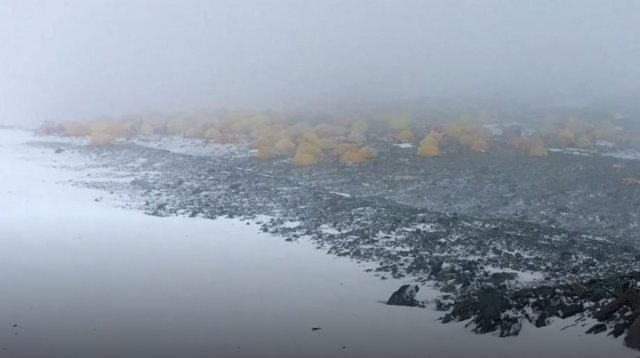March 15 () –
A study carried out on the South Col of Everest, a step prior to the final assault on the top, has revealed that climbers are leaving a frozen legacy of resistant microbes in their camps.
These microbes can withstand harsh conditions at altitudes like this, 8,000 meters above the sea, and remain dormant in the soil for decades or even centuries. According to new research led by the University of Colorado at Boulder
The research not only highlights an invisible impact of tourism on the world’s highest mountain, but could also lead to a better understanding of the environmental limits of life on Earth, as well as where life may exist on other planets or cold moons. . The findings were published in Arctic, Antarctic, and Alpine Research.
“There is a frozen human signature in Everest’s microbiome, even at that altitude,” he said. it’s a statement Steve Schmidt, the paper’s lead author and a professor of ecology and evolutionary biology, who led the research team.
In past decades, scientists have been unable to conclusively identify human-associated microbes in samples collected from more than 8,000. This study marks the first time that next-generation gene sequencing technology has been used to analyze soil from such a high elevation on Mount Everest, allowing researchers to gain new insight into almost everything on them.
The researchers were not surprised to find microorganisms left behind by humans. Microbes are everywhere, even in the air, and can easily fly and land some distance from nearby campsites or trails. “If someone even blew their nose or coughed, that’s the kind of thing that could show up,” Schmidt said.
What impressed them, however, was that certain microbes that have evolved to thrive in hot and humid environments, like our noses and mouths, were hardy enough to survive in a dormant state in such harsh conditions.
This team of CU Boulder researchers study the cryobiosphere: the cold regions of Earth and the limits of life in them. They have taken soil samples everywhere from the Antarctic and the Andes to the Himalayas and the high Arctic. In general, human-associated microbes do not show up in these locations to the extent that they did in recent Everest samples.
Soil brought from Everest’s South Col camp was analyzed at various labs at CU Boulder. Using next-generation gene sequencing technology and more traditional culture techniques, they were able to identify the DNA of almost any living or dead microbe in the soils. They then carried out extensive bioinformatics analyzes of the DNA sequences to determine the diversity of organisms, rather than their abundance.
Most of the microbial DNA sequences they found were similar to resistant or “extremophilic” organisms previously detected at other high elevation sites in the Andes and Antarctica. The most abundant organism they found using old and new methods was a fungus in the genus Naganishia that can withstand extreme levels of ultraviolet radiation and cold.
But they also found microbial DNA to some organisms strongly associated with humansincluding Staphylococcus, one of the most common skin and nose bacteria, and Streptococcus, a dominant genus in the human mouth.
At high altitudes, microbes are often killed by ultraviolet light, low temperatures, and low water availability. Only the most resistant critters survive. Most, like the microbes humans carry to high altitudes, go dormant or die, but there’s a chance organisms like Naganishia will briefly grow when water and the perfect ray of sunlight provide enough warmth to help them thrive momentarily. But even to the hardiest of microbes, Mount Everest is a “Hotel California”: “You can leave whenever you want / But you can never leave.”
The researchers don’t expect this microscopic impact on Everest to significantly affect the wider environment. But this work has implications for the potential for life far beyond Earth, if humans ever set foot on Mars or beyond.
“We could find life on other planets and cool moons,” Schmidt said. “We’ll have to be careful to make sure we don’t contaminate them with our own.”














![[Img #74148]](https://thelatestnews.world/wp-content/uploads/2024/10/Street-lights-that-get-their-electricity-from-traffic-vibrations-300x200.jpg)